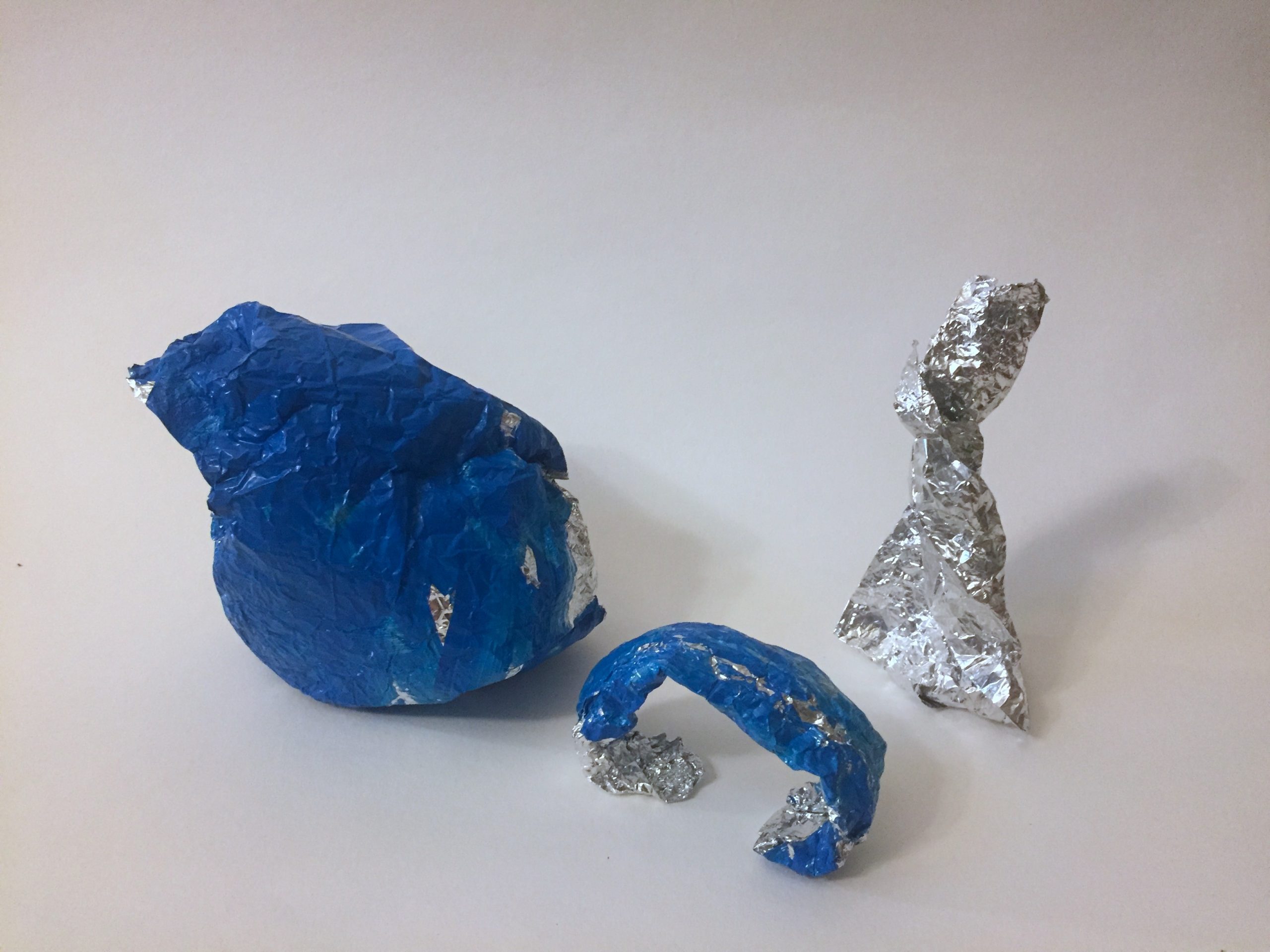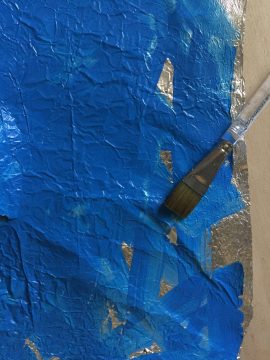Avant-Garde Aluminum

Paint your own aluminum sculpture inspired by Roy Lichtenstein’s giant Brushstroke.
We want to see your creations! Share on social media @hirshhorn with #HirshhornInsideOut.
Time: 20–30 minutes
Skill Level: Beginner
Topic: Movement
LOOK CLOSELY

Roy Lichtenstein, Brushstroke, 1996, enlarged and fabricated 2002-03. Hirshhorn Museum and Sculpture Garden, Smithsonian Institution, Washington, DC, Joseph H. Hirshhorn Purchase Fund, 2002
What do you see? Talk together about the colors, lines, and shapes. What materials do you think the artist used to make this sculpture?
What do you think this is a sculpture of? What makes you say that?
This sculpture is named Brushstroke. It was designed by the artist Roy Lichtenstein. Brushstroke is a very tall sculpture, nearly six adults tall (or 32 feet). The work is currently on view at the Kennedy Center in Washington, D.C. Lichtenstein made it by using fabricated aluminum, which means aluminum that was cut first and then bent into shape. Then, he painted the aluminum black and white. This sculpture is one of many in Lichentstein’s Brushstroke series, which focuses on showing the action of a paintbrush.
Try this: imagine you’re holding a paintbrush. Paint a large brushstroke in the air. Make it as big as you can! That movement is what Lichtenstein wanted to visualize. Make some more brushstrokes. What color do you imagine you are using? How big or small are your brushstrokes?
See more works in the Hirshhorn collection by Roy Lichtenstein.
Look around you. Do you see anything you use everyday that might inspire you to make art? Roy Lichtenstein (1923–1997) was an American artist best known for his bright, comic-like paintings. He also made prints and sculptures, such as Brushstroke. He was one of the founders of the Pop Art movement, and created more than 5,000 works during his career. Lichtenstein pulled inspiration from advertisements, comic strips, and famous artworks from past eras.
Lichtenstein grew up in New York City. His mother, who was a trained pianist, took care of him and his sister. He spent much of his childhood visiting museums and attending concerts. Lichtenstein began making art and playing music as a teenager. He grew up during the Jazz Age, and had a lifelong love of jazz music. Put on some music and get ready to make some art!
MAKE IT!
Roy Lichtenstein’s Brushstroke is known for its action-packed subject: the movement of a paintbrush. For this project, we’ll take inspiration from Brushstroke and create our own painted aluminum sculpture.
- Gather your materials: aluminum foil, scissors, acrylic paint, and paint brushes.
Note: Other paints are not recommended for this project.

- Explore the possibilities of aluminum foil. Begin with a flat sheet of aluminum foil. What can you make? Try folding the aluminum in half, like a tent. Can you make it stand up? This structure is a sculpture! Try twisting the foil or balling it up.

- Design your sculptural form. What shape would you like for your sculpture to be? Lichtenstein made his sculpture look like a brushstroke. Think about how you want your sculpture to look, and make a few sketches.

- Choose your palette. Lichtenstein chose black and white paint for Brushstroke. Many of his other works feature bright, primary colors like red, blue, and yellow. What colors will you choose for your sculpture? We chose a blue hue called cerulean.
- Paint your foil. You might decide to mimic Lichtenstein’s action-packed brushstrokes or you might come up with a different design that is more interesting to you. Note: we prefer to paint our foil before sculpting.

- Title your work! We named our sculpture Dance. Sculptures are 3-dimensional and can be viewed from many angles. Document your work and take photographs from different angles.

- Want to do more? Make a series. Lichtenstein made many artworks over multiple decades as part of the Brushstroke series. Try making different shapes with your aluminum and experimenting with your paint colors and designs!

We want to see your creations! Share on social media @hirshhorn with #HirshhornInsideOut.